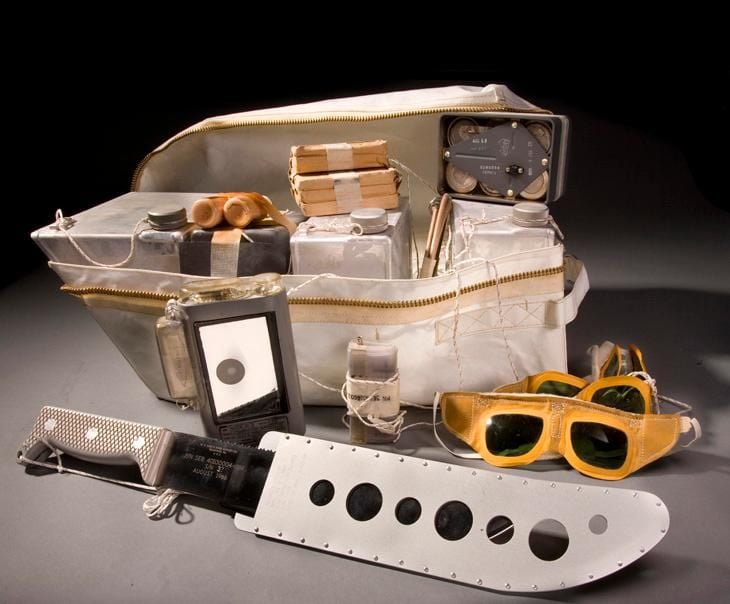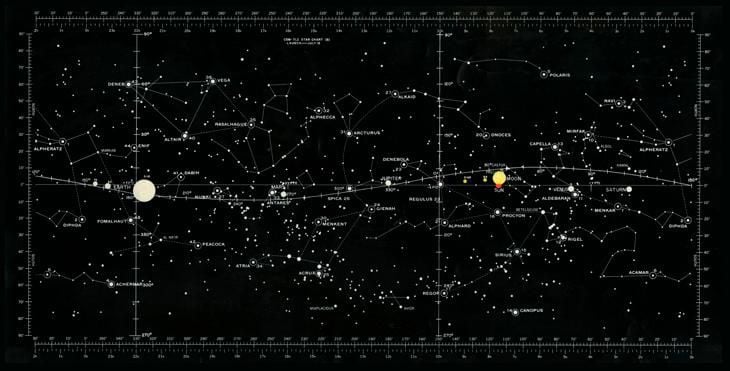Apollo 11 Moonship To Go On Tour
For the next two years, the Command Module Columbia and other artifacts will travel the United States.
/https://tf-cmsv2-smithsonianmag-media.s3.amazonaws.com/filer/19/f9/19f95403-d31a-44d5-9034-4ed7bdf34cc3/apollocommandmodule.jpg)
The journey that the Apollo 11 command module Columbia was built to take was 953,054 miles: to the moon and back, with astronauts Neil Armstrong, Buzz Aldrin, and Michael Collins safely stowed inside. Now, nearly 50 years later, the spacecraft, charred and battered from the forces of atmospheric reentry, is about to make another journey, shorter, and at a more sedate pace: across the United States.
For the next two years, Columbia will travel 8,000 miles and visit four museums, arriving at the last in time to mark the 50th anniversary of the first lunar landing. The tour—titled Destination Moon: The Apollo 11 Mission—will start at Space Center Houston (October 14, 2017, to March 18, 2018), continue to the Saint Louis Science Center (April 14 to September 3, 2018) and the Senator John Heinz History Center in Pittsburgh (September 29, 2018, to February 18, 2019), and conclude at Seattle’s Museum of Flight (March 16 to September 2, 2019).
The command module will join about 20 Apollo-era artifacts in an exhibition developed by the Smithsonian Institution Traveling Exhibition Service (SITES) and the National Air and Space Museum. It will feature an interactive 3D tour created from high-resolution scans of Columbia taken at the Museum last year. The scan will allow visitors to explore the command module’s interior, including notes written by the astronaut crew that had been unseen for decades.
The size and weight of the command module required each museum on the tour to meet specific engineering guidelines, says Kathrin Halpern, the SITES project director of the exhibit. “Columbia weighs 9,130 pounds,” she says. “Then you add to that the transport ring, which weighs almost 4,500 pounds, plus the equipment needed to rig and place the Columbia. We had to make sure that all of the venues had floor-load capacities that could hold all of that. It’s also a very large object, over 10 and a half feet tall and 13 feet in diameter, so getting the object into the building is something that we had to double-check.”
For more than 65 years, SITES has shared items from the Smithsonian’s collections with people outside the Washington, D.C. area. It has mounted exhibitions in Smithsonian-affiliated museums, libraries, historical societies, and community centers. About 40 exhibitions travel each year, covering topics from our solar system to the American presidency to Star Wars costumes.
In addition to loaning artifacts, SITES supervises the packing and shipping of the exhibit. All of the artifacts in Destination Moon: The Apollo 11 Mission will travel by truck in climate-controlled crates that are built to minimize vibration and shifting. Museum staff will be on hand to help install the priceless artifacts at each stop.

What else will visitors see? The lunar sample return container—known as the “rock box”—that brought more than 47 pounds of lunar samples back to Earth. Buzz Aldrin’s extravehicular visor will also be on display. The visor was worn over Aldrin’s pressure helmet and provided protection from ultraviolet and infrared light, as well as micrometeoroid impacts. Also on view is Michael Collins’ “solo book,” which contained flight plans and contingencies for Collins, who orbited alone in Columbia while Armstrong and Aldrin walked on the lunar surface.
The F-1 injector plate, from one of the five engines of the Saturn V rocket, sprayed liquid oxygen and kerosene fuel into the rocket’s combustion chamber and helped regulate the flow of the hot gases. It ended up on the bottom of the Atlantic Ocean, and was retrieved by Bezos Expeditions in 2013.

This tour marks the first time Columbia has left Washington since the Museum’s opening in 1976. Before Columbia entered the Smithsonian’s collections, it traveled to all 50 state capitals as part of a NASA-sponsored tour in 1970 and 1971. It then went on display in the Smithsonian’s Arts & Industries building before moving to the National Air and Space Museum.
When Columbia stopped at the Ohio State Fairgrounds in 1970, a NASA exhibition specialist found in the line of the tens of thousands of people queued to see it the parents of Neil Armstrong, patiently waiting their turn. He pulled them to the front, but they stayed just a short time, knowing others were waiting to see this historic engineering marvel that had carried their son to the moon and brought him home again.